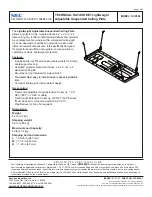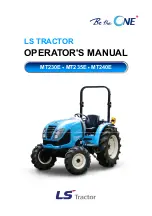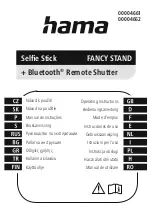
17
8.
Forklift Hand Signals:
Always review the meaning of the
accepted forklift hand signals
before starting to work. This will
insure that both the driver and the
spotter know and understand the
signals that are being used. Be
sure that everyone on the
worksite is aware of the signals
and understands them.
Fig. 7 FORKLIFT HAND SIGNALS
1. STOP
2. RAISE LOAD
3. LOWER LOAD
4. TILT FORKS RIGHT 5. TILT FORKS LEFT 6. TILT FORKS UP
7. TILT FORKS DOWN 8. MOVE LOAD
9. MOVE LOAD
BACKWARD
FORWARD
9.
Operating Hints:
Most accidents can be
avoided by reviewing
instructions, reading the
manuals, reading and
following safety signs
and planning work to be
done. Taking your time and planning ahead
can save time, money, effort and make the
work site a safe environment. Safe practices
include but are not limited to:
a.
Review the work to be done. Plan the
machine movement before starting. Be
familiar with where the load will be picked
up, raised, moved and placed. Stay away
from slopes, rough terrain, holes, ruts,
ditches, curbs, exposed railroad tracks or
other conditions. If these cannot be
avoided, keep bucket and forks as low as
possible and travel slowly. Be sure your
tractor or loader is equipped with a ROPS
and a seat belt. Always use the seat belt.
Be sure surface can support the weight of
the vehicle.
b.
Stay away from
holes, banks, soft
soil, deep mud,
standing water, oil
spills, ice, slopes
and hillsides that
can cause tipping
or sliding. Take
another route to avoid these conditions.
c.
Large machines such as tractors, loaders
and other equipment can interfere with or
block visibility in all directions:
•
Be sure the back-up alarm is working.
•
Do not drive or move machine unless
you know where everyone is.
•
Approach blind corners with care.
Proceed slowly. Sound your horn.
•
In tight confined work areas, use a
spotter to help with clearances.












































